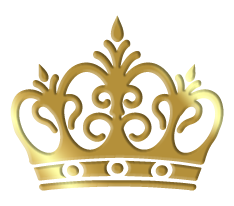The Trickster God: From Myth to Modern Stories
Across cultures and throughout history, the archetype of the trickster god has played a vital role in shaping mythological narratives and cultural identities. These figures are characterized by their cleverness, mischief, and ability to challenge norms, serving both as cosmic catalysts and mirrors of human complexity. Understanding the evolution of the trickster—from ancient mythologies to contemporary media—reveals insights into societal values, psychological functions, and the enduring power of storytelling.
2. The Mythological Roots of Trickster Deities
3. The Evolution of Trickster Characters in Modern Stories
4. Case Study: Le Zeus – A Modern Illustration of the Trickster Archetype
5. The Psychological and Cultural Functions of Trickster Figures
6. Interactive and Gamified Perspectives: Learning About Tricksters Through Modern Media
7. Deep Dive: The Symbolism Behind Trickster Traits and Their Cultural Significance
8. The Future of the Trickster Archetype in Popular Culture and Media
9. Conclusion: The Enduring Legacy of the Trickster God
1. Introduction to the Trickster God: Defining the Archetype
a. Origins of the Trickster in Mythology
The trickster archetype emerges from the earliest human attempts to explain the unknown and impose order on chaos. In many mythologies, tricksters serve as boundary-crossers—entities that defy societal rules and cosmic laws to reveal hidden truths. For example, in Norse mythology, Loki embodies cunning and mischief, often causing chaos but also facilitating change. Similarly, many Indigenous cultures in North America feature Coyote as a cultural hero and trickster, symbolizing adaptability and resourcefulness.
b. Common Traits and Functions of Trickster Figures
- Cleverness: Tricksters are often portrayed as highly intelligent, using wit and cunning to outsmart others.
- Deception: They frequently employ tricks, illusions, and humor to achieve their goals.
- Challenge to Authority: Tricksters question or subvert social norms and divine laws, often exposing hypocrisy or injustice.
- Transformative Role: Their actions can lead to renewal or new understanding, despite seeming chaos.
c. Significance of the Trickster in Cultural Narratives
Trickster figures serve as essential storytelling devices, functioning as catalysts for change and vehicles for cultural values. They embody the tension between order and chaos, often illustrating that growth involves disruption. Their stories challenge audiences to question assumptions and recognize the complexity of human nature.
2. The Mythological Roots of Trickster Deities
a. Examples from Different Cultures (e.g., Loki, Coyote, Anansi)
Throughout the world, diverse cultures have preserved stories of mischievous and clever beings. Loki, the Norse god, embodies chaos and trickery, often causing trouble for gods and humans alike but also facilitating important transformations. In Native American traditions, Coyote appears as a creator and destroyer, symbolizing adaptability and wisdom through deception. West African folklore features Anansi, the spider god, as a master storyteller and cunning strategist who imparts moral lessons through humorous tales.
b. The Role of Tricksters in Explaining the World and Challenging Norms
Trickster myths often serve as allegories for human curiosity and ingenuity. They explain natural phenomena, social customs, and moral codes by illustrating how wit and cunning can navigate complex situations. For example, many stories depict tricksters using deception to outwit more powerful entities, thus challenging hierarchical structures and promoting social cohesion through humor and cleverness.
c. The Dynamic Between Trickster and Creator Deities
In many mythologies, tricksters coexist with creator gods, often acting as catalysts for creation through their disruptive acts. Loki’s mischief, for instance, leads to the formation of new worlds and divine objects in Norse myths. This dynamic underscores the idea that chaos and order are intertwined, with tricksters facilitating change and renewal.
3. The Evolution of Trickster Characters in Modern Stories
a. Transition from Myth to Literature, Film, and Media
While trickster figures originated in ancient mythologies, they have seamlessly transitioned into modern storytelling mediums such as literature, cinema, and digital media. From the cunning thief in classic detective stories to antiheroes in contemporary films, the essence of trickery and cleverness remains central. The adaptation of trickster traits in modern narratives allows audiences to explore complex moral ambiguities and societal critiques.
b. Characteristics That Remain and Those That Change
- Persistence of Cleverness: The hallmark trait of wit and resourcefulness persists.
- Evolution of Morality: Modern tricksters often display a more nuanced morality, sometimes acting as antiheroes or agents of social change.
- Increased Complexity: Traits such as vulnerability, emotional depth, and moral ambiguity are added, reflecting contemporary values.
c. How Modern Tricksters Reflect Contemporary Societal Values
Modern tricksters often embody traits like independence, skepticism of authority, and adaptability—values highly prized in today’s rapidly changing world. For example, antiheroes such as Walter White in “Breaking Bad” or the hacker protagonists in cyberpunk stories demonstrate how trickster qualities can symbolize resistance against oppressive systems and a quest for personal autonomy.
4. Case Study: Le Zeus – A Modern Illustration of the Trickster Archetype
a. Overview of Le Zeus and Its Cultural Significance
Le Zeus is a contemporary digital character that exemplifies the trickster archetype within modern entertainment. Originating from online gaming communities and media adaptations, Le Zeus embodies wit, playful deception, and unconventional approaches to problem-solving. Its popularity underscores how ancient archetypes are reinterpreted to resonate with today’s audiences, blending humor and ingenuity with technological advances. To explore a modern example of trickster storytelling, you can found this.
b. How Le Zeus Incorporates Elements of Traditional Tricksters
Le Zeus exhibits key traits of traditional tricksters: it employs clever strategies, uses humor, and challenges conventional expectations within its narrative. Its playful interactions and unpredictable behavior mirror mythological figures like Loki or Anansi, demonstrating that the core qualities—wit, mischief, and adaptability—remain relevant in digital storytelling. This approach helps modern audiences connect with ancient archetypes through engaging, accessible media.
c. The Playful and Non-Traditional Approach as a Reflection of Trickster Traits
Le Zeus’s non-traditional methods—such as unexpected plot twists and humorous engagement—highlight the trickster’s role as a disruptor of norms. Its playful nature fosters curiosity and critical thinking, encouraging viewers to question assumptions and see the world from new perspectives. This modern reinterpretation exemplifies how the essence of the trickster archetype persists, adapting to new cultural contexts and technological landscapes.
5. The Psychological and Cultural Functions of Trickster Figures
a. Tricksters as Agents of Change and Disruption
Psychologically, tricksters symbolize the part of the human psyche that seeks novelty and challenges the status quo. Cultures use trickster stories to encourage creative problem-solving and resilience. They serve as reminders that disruption, while uncomfortable, can lead to growth and renewal. For instance, in personal development, embracing a “trickster mindset” fosters innovation and adaptability.
b. Their Role in Challenging Authority and Promoting Innovation
Historically, tricksters challenge divine or societal authority, often exposing corruption or hypocrisy. This role aligns with their function as catalysts for social change. In contemporary contexts, trickster-like characters inspire innovation by questioning traditional methods, leading to breakthroughs in science, technology, and culture.
c. Symbolism of Tricksters in Personal and Societal Growth
Tricksters symbolize the need for flexibility, humor, and critical thinking in navigating life’s challenges. They encourage society to embrace change and see mistakes as opportunities for learning—highlighting that growth often involves a playful yet conscious questioning of established norms.
6. Interactive and Gamified Perspectives: Learning About Tricksters Through Modern Media
a. The Role of Games and Interactive Content in Educational Engagement
Modern media utilize interactive platforms—such as educational games, quizzes, and augmented reality—to teach about mythological archetypes. These tools make learning engaging and memorable, allowing users to explore trickster traits through immersive experiences. For example, online quizzes like “Myth-taken Identity” challenge players to identify trickster figures based on their characteristics, fostering critical thinking.
b. Analysis of Features Like “Myth-taken Identity” and Mystery Meters in Enhancing Understanding
Features such as “Myth-taken Identity” games encourage users to distinguish between different trickster archetypes, deepening their understanding of cultural nuances. Mystery Meters assess how well learners grasp the symbolism and functions of tricksters, reinforcing key concepts through playful challenges.
c. The Use of Cultural Symbols and Playful Elements in Modern Storytelling
Incorporating cultural symbols—such as masks, animals, or mythological motifs—into interactive content bridges ancient stories with contemporary narratives. Playful design elements foster curiosity and make complex ideas accessible, ensuring that the archetype remains relevant and engaging for diverse audiences.
7. Deep Dive: The Symbolism Behind Trickster Traits and Their Cultural Significance
a. Deception, Cleverness, and Humor as Tools of the Trickster
These traits symbolize adaptability and the ability to navigate complex social landscapes. Deception often represents strategic thinking; humor serves as a social lubricant and a means to diffuse tension. In stories, these tools challenge protagonists and audiences alike to question appearances and motives.
b. Non-Obvious Aspects: Tricksters as Mirrors of Human Complexity
Tricksters embody contradictions—being both heroic and mischievous, wise and foolish. This duality reflects human nature’s multifaceted character, encouraging audiences to accept imperfection and embrace complexity in themselves and others. Such stories foster empathy and self-awareness.
c. How Trickster Stories Foster Critical Thinking and Cultural Awareness
By analyzing trickster tales, learners develop skills in interpretation and cultural literacy. Recognizing the layered symbolism in these stories helps individuals understand diverse worldviews and challenges simplistic narratives, promoting critical engagement with cultural symbols and myths.



